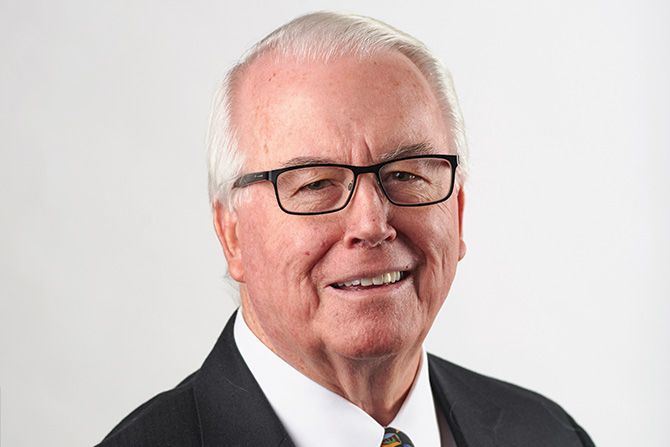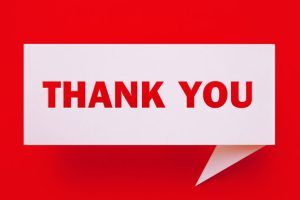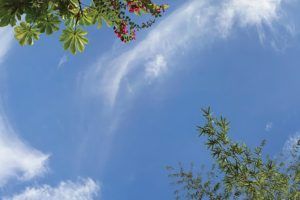Tony Wegener is an Australian native. When he came to Logan, Utah, in the 1960s to marry his fiancé, the plan was to stay here for five years, get to know her people, and then return home to Australia. He joined a seventy-year-old firm, Schaub Haycock & Associates, in 1966. When the owner retired, Tony and his partners reorganized the firm and renamed it Architectural Design West. The firm is still thriving, and so is Tony. After fifty years in the industry, he is retired and still lives in Logan, but visits Hawaii three weeks out of every year to surf – an addiction he acquired early in Australia.
How did you decide to become an architect?
My mother was working in a medical clinic in Perth, Western Australia. I wanted to be a doctor because of being around them. My art teacher took me to one side and said, “You have talent, kid. You need to be an architect.” The doctors I lived with said, “Look, apply yourself to where your talent is.”
I went to school at Perth Technical College. It was a five-year course: three years full-time and two years part-time. I worked four days a week, and went to school one day a week and two nights a week. So, I had the practical experience at the same time we were doing the professional experience.
My design teacher was a woman, the first licensed architect in Western Australia. She was licensed in the 1920s, and she was fabulous. The first three years, we feared her, and the last two years, we loved her. We feared her because she dumped one design assignment on top of another design assignment, and we had no idea what we were doing until we learned by doing it. Sort of like riding a bicycle; you can’t tell someone how to ride a bicycle. You can coach them if they trust you. And we trusted her.
The state paid for my education. I got a scholarship, but I had to work for the state for four years after I graduated. Turns out I only worked one year for the state. I joined the LDS Church [The Church of Jesus Christ of Latter-Day Saints] when I was 20, and I got called on a mission as an architect for the church, so I worked in Sydney for almost two years with the worldwide program building one-and-a-half chapels a day. We did about 15 meeting houses, and I got to travel all over Australia to construction sites.
How did you move from Perth to Logan, Utah?
The short story is I met a girl from Logan, Utah, in Sydney and followed her home.
I was engaged to my wife before she left Australia. She worked in the hospital as a dietitian, then she left and went around the world with her mother. In 1965, when my fiancée got back to the States, I got a tourist visa, and we got married six weeks later. I thought I owed it to my wife to spend a little time in her community, so I applied for a job at Schaub and Haycock. It was a family business that had been in business since 1892. We think it’s the longest continuously operating architectural firm west of the Mississippi.
Gene Haycock liked my experience with off-form concrete (there’s not a lot of lumber in Australia). He had just received the commission to design the USU football stadium, and they wanted to do that in off-form concrete. He asked me, “Have you ever done anything with off-form concrete?” “Matter of fact, my last job in Sydney was doing a beautiful office building for the Reader’s Digest Association.” He hired me on the spot.
What did it take to get licensed in the U.S.? Were you licensed in Australia?
I was. Well, I approached somebody on the licensing board about the process, and he said, “I would like you to hold off for a while.” And I said, “Why?” And he said, “We are working on a reciprocity agreement between the AIA and the RAIA (Royal Australian Institute of Architects). I would like to use you as a test for this process.” I think I was the fifth Australian architect licensed in the United States. I didn’t have to take any tests. I just got reciprocity.
So, you’re working on the USU Football Stadium. Are you thinking, “Now I’m an American,” or “I’m going back to Australia?”
The plan was to work here and get professional experience for about five years. I had no intention of staying, but one thing led to another in terms of work experience.
My only serious attempt to leave was in 1970 when things were bad in Utah. I thought, “I ought to look around.” Caudill Rowlett Scott [CRS] in Houston, Texas, was a firm of about 350 people specializing in architecture for education. I wrote them a letter. They invited me to come for an interview. I met Bill Caudill, probably the premier architect in the United States, and he interviewed me.
He said, “I see that you’re from Utah. Are you a Mormon?” I said, “Uh, yes, sir. Is that going to be an impediment?” He said, “Not at all. We’ve got some Mormons working here, and they’re good employees, but let me tell you something. I can hire any architect I want in the United States. I can get the best and brightest students from any college, but some aren’t worth a damn.” Then he went into a litany of all the human problems that people have, “I’ve got some guys who can’t hold their liquor, play around with other guys’ wives,” he went on and on and on – all the human failings – he said, “Let me tell you something, son. I’m looking for good guys who know their stuff. In that order.” And that’s been my mantra for years. You might be a great architect, but if you’re not a good human being, you are not going to fit in here. That was a lesson learned as a young architect.
Did you go to work for them?
No. They really didn’t offer me a job either. I did meet a young architect, Michael Henderson, who was working for CRS in their hospital design division. He had worked for Schaub Haycock in 1961 when he was a student at USU. He went to Rice [University] and got a degree in architecture and was hired by Bill Caudill. He and I decided we would try to make a health care design firm work on Utah.
How did the firm evolve from a small family-owned firm to a multi-office concern?
We were doing K-12 design in Utah and Idaho. I talked to Gene Haycock and said, “When you send me out to meet a school board, the first thing they ask me is ‘Where’s Haycock?’ What we need is a company that doesn’t have a personal name in it, so that people don’t ask me where the boss is.” So we became Design West in 1971, and in 1973 when Michael Henderson returned to Logan, we formed Design West Health Facilities. One of Michael Henderson’s associates became the healthcare design leader at HKS Architects in Dallas. When we got our first hospital, they sent us two employees for three months to help us produce that hospital. We had a relationship with them that lasted for at least 30 years.
Gene Haycock, like other older architects, couldn’t stand the change and the legalities. We never had contracts when I started. In fact, when I presented a contract to the superintendent of the Cache County School District for the first time, he said, “Tony, if I have to sign that, we will never do business again.” All business was done on a handshake. Gene couldn’t stand the litigation, the whole “having to have insurance.” In 1976, he accepted the job to be the District Architect for the Cache Valley School District and retired from Design West. So, we reorganized.
My partner, Richard Clyde, led the firm toward energy conservation design in the 1970s, which he applied to K-12 design. That led the firm into a twenty-five-year period of innovation through the western states. At one point, we had seven offices located in Utah, Idaho, California, and Washington. We won multiple state and national awards for energy conservation and energy innovation in public architecture.
Many of our healthcare clients were hiring design-build companies. So, we made the business decision to form our own design-build company that did hospitals until 1985, when we lost three partners in a plane crash. One of the guys who died was the president of that company. The three partners we lost in that plane crash were Michael Henderson, Joe Oyler, President of PM-CM, and Richard Clyde, who was our number one education facility designer, and my best friend.
That was tragic. We say in this company that we are survivors. Our founder, K.C. Schaub, was a survivor. I’ve traced all the ups and downs; even in the 1890s, there were downturns. He survived. There’s been lots of ups and downs, but 1985 was really hard, followed by 1987, which was another downer in the economy. In 1985, on the day after we lost our partners, Ron Skaggs, the president of HKS, flew up to Logan, put his arm around me and said, “Don’t make any fast moves. The entire resources of HKS are behind you,” and that was a wonderful professional thing.
And what did you learn through that process?
To keep going. I spent about two years after that in a funk; just, I couldn’t see any point in the struggle. I was just going through the motions, but I was the president of the company. Then one day I had been trying to get an appointment with a developer. I’d call his secretary and she’d say, “Give me a few weeks and I’ll call you back.”
Finally, she said, “He will see you, but go to the University of Utah Medical Center to see him,” because he had an accident on a trampoline and broke his neck. I went to see him not knowing really what I was going to say. I didn’t know that he was paralyzed until they wheeled him up in a wheelchair. And he looked at me and said, “Mr. Wegener, you can begin.”
So, I just talked to him about what I wanted to talk to him about, and he said, “Thank you very much.” And I left. I’ve never seen him again. And yet he’s my hero because I realized, here’s a guy who’s still working. Work is important. From that point on, I got my mojo back and decided to give it my very best.
What happened?
We made it. It was hard. We let half our people go. We had formed several affiliated companies, including the design-build firm, and they were dissolved. We focused on architecture. We continued to do schools in California and the west, and we did lots of hospital work for Intermountain Healthcare.
Then I got into student housing and positioned us to do the 2002 Winter Olympic Village, which then was the biggest project ever awarded by the State. After that, we got into military housing. We did half a billion dollars of military housing with a local contractor with whom we won design-build contracts for the Air Force. One day we were invited to Colorado Mesa University. We made a presentation and were selected. We worked for them for 11 years, until my retirement. We did a lot of student housing and classroom buildings for university work. It was wonderful.
Tell us about your design philosophies, and changes you have seen in architecture since you began in the sixties.
One of my clients’ employees gave him an article about design thinking. The article was about Stanford’s design school, which had started in 1969, the same year HKS came out with their “Problem Seeking Problem Solving Techniques and Design by Team” which we adopted. 1969 was a formative year in architecture for me.
My client said, “Tell me about this design thinking.” And I said, “Okay,” but first I flew to Stanford and spent the day in the Design Thinking Lab, which was fascinating. There was not a single computer there. It was all about learning to collaborate and cooperate and communicate, verbally and graphically. I was blown away. I mean, that’s how I learned architecture. I learned by doing and communicating.
When I started in 1958, I did all my drafting in ink on linen, using ruling pens. The founder of our firm began in 1892, and nothing had changed in the way he practiced or prepared drawings, construction documents in 1958, when he died. Since then, everything has changed.
Rapidographs replaced ruling pens and then overlay drafting became the forerunner of computer drafting and design. Then the computers came online. I tried to learn CADD, but I was the marketing manager, not in production. And so I got left behind. When I would pull out a drafting board and start doing some things, people would come and watch me. I’ve kind of regretted that I didn’t take the time, but there were plenty of others who had that capability.
What do you think is a good building?
We’ve done a lot of good designs that our clients are very happy with. But that was never our objective, our objective was to have a firm that served our needs first, made us feel good, but also made our clients feel good.
Richard Clyde did a wonderful elementary school in St George. It was a marvelous school. His clients loved it. They did a middle school, and they didn’t even invite him to propose for it. He came to me almost in tears saying, “Why do we do this? I’ve just busted buns for a school that’s got all kinds of awards, national energy awards, and they didn’t even invite me.”
It was an epiphany. I said, “Richard, you do your best for your own self-respect. You do your best for your client. If you do your best for your own self-respect, your client will be well-served. But don’t do your best hoping to get rewards from a corporate client or a school board because they’re fickle. So do your best for yourself.” That’s our firm approach. We created a company people want to join and, if we do our best, then our clients will be well-served.
Do you have any advice for people starting in the business today.
I have loved being an architect, just loved getting up in the morning to go to work, even when I was 75. I loved getting up to work on a proposal for a project that we didn’t win.
This is such a wonderful profession. It’s so broad – there are so many pieces to it that anyone can find a niche in which they can be successful and happy. Not every architect has to be a wonderful designer. There’s room for everybody. I tell people I loved it all: from marketing to design to construction documents to working in the field.
It’s been a privilege and a pleasure to work in Utah. Because at least I never ran into graft and corruption ever. No one ever offered me a bribe; I never accepted one. Someone told me, “You were just too dumb to notice,” but I think it’s been refreshing.
To watch the full interview, please visit: https://www.youtube.com/watch?v=Zc3yq63Chy8






